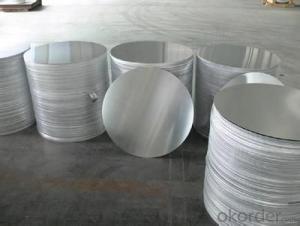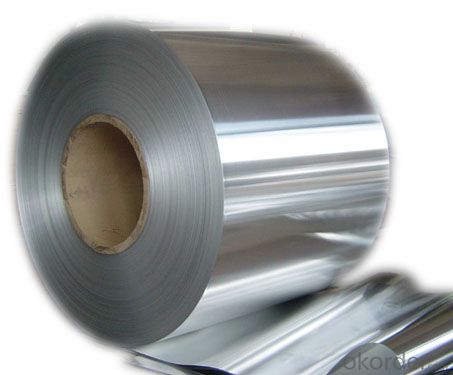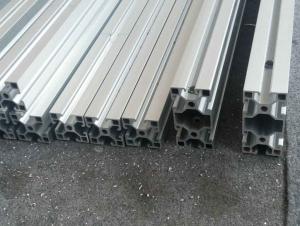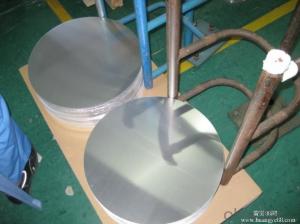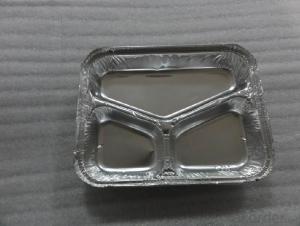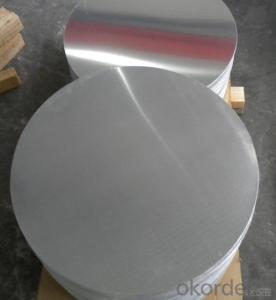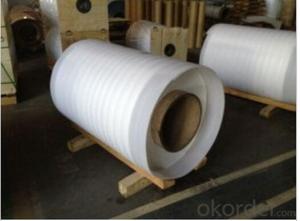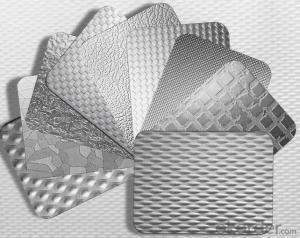Bending Light Weight Aluminum Sheets for Cooking Applications
- Loading Port:
- Shanghai
- Payment Terms:
- TT OR LC
- Min Order Qty:
- 2 m.t.
- Supply Capability:
- 1000 m.t./month
OKorder Service Pledge
OKorder Financial Service
You Might Also Like
Specification
Structure of Aluminium Circle for Cooking Applications Description:
Coated aluminum coil/sheet are of a wide range of colors, which gives wonderful appearance no matter in residential and commercial constructions of great exhibition centers.
The coated aluminum coil/sheet have been widely used in the fields of construction and decoration( garage doors, ceiling etc.), electronic appliances, lighting decoration, air-condition air pipes, sandwich panels and drainages etc.
Main Features of the Aluminium Circle for Cooking Applications:
1) High flexibility
2) Impact resistance
3) Excellent weather-proof durability
4) Anti-ultraviolet
5) High erosion resist
Images of the Aluminium Circle for Cooking Applications:
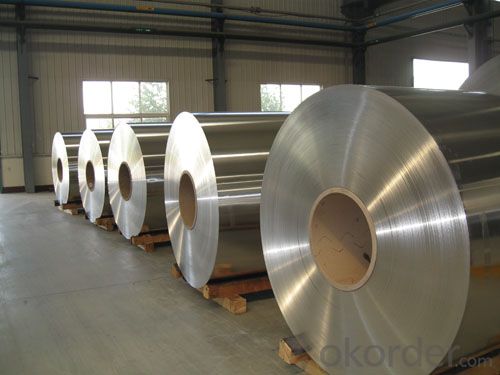
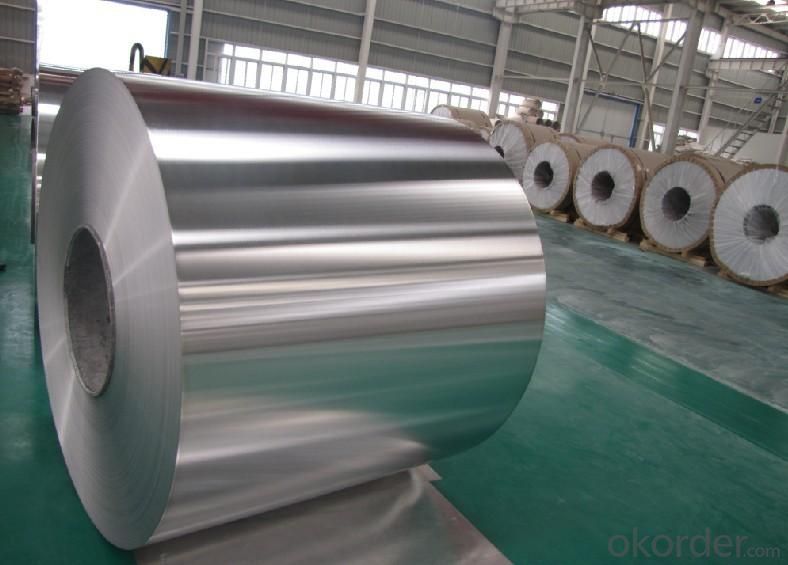
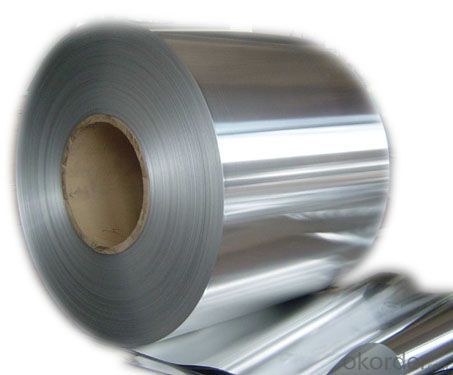
Aluminium Circle for Cooking Applications Specification:
Alloy | A1100,A3003,A1050,A8011 etc |
Temper | H16,H18,H24 |
Thickness | From 0.024mm to 1.2mm |
Width | Standard width:1240mm |
Special width:1300mm,1520mm,1570mm,1595mm | |
Diameter | Standard dia:1200mm |
Interior dia:150mm,405mm,505mm | |
Weight | 2.5 T/coil,3.0 T/coil |
Coating | PE, PVDF, AC |
Surface | Embossed, mill finish, coated |
Color | AS to code RAL |
Gloss | 10-90%(EN ISO-2813:1994) |
Coating Thickness | PE: more than 18 micron |
PVDF: more than 25 micron | |
Coating Hardness (pencil resistance) | More than 2h |
Coating adhesion | 5J(EN ISO-2409:1994) |
Impact Resistance | No peeling or cracking(50 kg/cm,ASTMD-2794:1993) |
Flexibility (T-bend) | 2T |
MEK resistance | More than 100 |
FAQ Aluminium Circle for Cooking Applications:
a.What is monthly capacity
---CNBM is one stated own company and our monthly capacity is about 2000tons.
b. Now which countries do you export your goods?
---Now we export to South East Asia,Africa, North America,South America ect.
- Q: Can aluminum sheet be used for aerospace structural components?
- Yes, aluminum sheet can be used for aerospace structural components. Aluminum is commonly used in the aerospace industry due to its desirable properties such as low density, high strength-to-weight ratio, and excellent corrosion resistance, making it suitable for various structural applications in aircraft and spacecraft.
- Q: Can aluminum sheets be used for sound barriers?
- Yes, aluminum sheets can be used for sound barriers. Aluminum is a lightweight and durable material that can effectively block and absorb sound waves, making it an ideal choice for soundproofing applications. Aluminum sheets can be installed in various forms, such as solid panels or perforated sheets, to create effective sound barriers in residential, commercial, and industrial settings. The thickness and design of the aluminum sheets can be customized to meet specific soundproofing requirements. Additionally, aluminum is resistant to corrosion, making it suitable for outdoor applications where sound barriers may be exposed to harsh weather conditions. Overall, aluminum sheets provide a cost-effective and efficient solution for reducing noise levels and creating quieter environments.
- Q: Are aluminum sheets suitable for electrical enclosures?
- Yes, aluminum sheets are suitable for electrical enclosures. Aluminum is a lightweight and durable material that offers excellent electrical conductivity and corrosion resistance, making it an ideal choice for protecting electrical components. Additionally, aluminum's thermal conductivity helps dissipate heat generated by the enclosed equipment, ensuring proper functioning and longevity.
- Q: What are the different thicknesses available for aluminum sheet?
- The different thicknesses available for aluminum sheet vary depending on the specific requirements and applications. Common thicknesses for aluminum sheet range from 0.016 inches (0.41 mm) to 0.25 inches (6.35 mm), with numerous options in between. The appropriate thickness is determined by factors such as the intended use, structural requirements, and aesthetic preferences.
- Q: Which kind of solution should I use while welding aluminum sheet and copper pipe by tin soldering?
- 1, you must use over 350W soldering iron, 2,prepare some borax and tin soldering paster, you can’t use rosin to weld it, 3, polish the pipe to clean with fine abrasive paper and borax, 4, put the pipe and sheet into borax, use the soldering trip to rub on the weldment with some borax. 5, after the pipe and sheet become hot, use the soldering iron with the paster and tin to rub the pipe and sheet in borax, then it can be welded. 6, they can be welded together after welding.
- Q: This question asks about the distinctions between aluminum sheets that are produced domestically versus those that are imported.
- <p>Yes, there can be differences between domestic and imported aluminum sheets. These differences may include quality standards, material composition, thickness, surface finish, and price. Domestic sheets are often produced to meet local standards and regulations, while imported sheets may adhere to different international standards. The manufacturing process and raw materials used can also vary, leading to differences in durability, strength, and workability. Additionally, imported sheets might have different certifications or come from countries with lower production costs, which can affect the price. However, it's important to note that not all imported aluminum sheets are of lower quality; some may be of higher quality or have specific characteristics that are not available domestically.</p>
- Q: What are the different methods of surface cleaning for aluminum sheets?
- There are several methods of surface cleaning for aluminum sheets, each with its own advantages and suitability for different types of cleaning needs. 1. Mechanical Cleaning: This method involves using mechanical abrasion techniques to remove dirt, stains, and oxidation from the surface of aluminum sheets. It can be done using brushes, abrasive pads, sandpaper, or a wire brush. Mechanical cleaning is effective for removing heavy dirt or oxidation, but it may leave scratches on the surface if not done carefully. 2. Chemical Cleaning: Chemical cleaning involves the use of specific cleaning agents or solutions that are designed to dissolve or remove dirt, grease, oil, or other contaminants from aluminum surfaces. These cleaning agents can vary depending on the type of dirt or stain being removed. For example, alkaline cleaners are effective for removing oil and grease, while acidic cleaners can remove mineral deposits or oxidation. It is important to follow the manufacturer's instructions and safety precautions when using chemical cleaners. 3. High-Pressure Water Cleaning: This method utilizes a high-pressure water jet to clean the aluminum surface. The force of the water helps to dislodge dirt or grime from the sheet. High-pressure water cleaning is particularly useful for removing loose debris or light dirt from larger areas. However, it may not be suitable for heavily soiled or oxidized surfaces. 4. Steam Cleaning: Steam cleaning involves using high-temperature steam to remove dirt, grime, or other contaminants from aluminum sheets. The steam helps to loosen the dirt, making it easier to wipe or rinse away. Steam cleaning is effective for removing grease, oil, or other stubborn stains. It is a versatile method that can be used on both small and large surfaces. 5. Electrolytic Cleaning: Electrolytic cleaning is a specialized method that uses an electric current to remove contaminants from the aluminum surface. The aluminum sheet is immersed in a cleaning solution, and an electric current is passed through it. This causes the contaminants to be attracted to a sacrificial electrode, leaving the aluminum sheet clean. Electrolytic cleaning is effective for removing heavy oxidation or corrosion, but it requires specialized equipment and expertise. It is important to consider the specific cleaning requirements, the condition of the aluminum sheet, and the desired level of cleanliness when choosing the appropriate method of surface cleaning. It is also advisable to test the chosen method on a small, inconspicuous area first to ensure compatibility and avoid any potential damage to the aluminum sheet.
- Q: What are the common thicknesses of aluminum sheets used in aerospace applications?
- In aerospace applications, aluminum sheets are commonly used due to their lightweight and high strength properties. The thickness of aluminum sheets used in aerospace applications can vary depending on the specific requirements of the component or structure being fabricated. Commonly used thicknesses for aluminum sheets in aerospace applications range from 0.016 inches (0.4 mm) to 0.25 inches (6.35 mm). These thicknesses are selected based on factors such as the desired strength-to-weight ratio, structural integrity, and the specific application or component being manufactured. Thinner aluminum sheets, such as those with a thickness of 0.016 to 0.040 inches, are often used for lightweight structures, interior components, and non-critical parts. These thinner sheets provide the necessary strength while minimizing weight. For more structural components, thicker aluminum sheets are employed. Thicknesses between 0.040 and 0.125 inches are commonly used for structural elements like floor panels, bulkheads, and wing ribs. These sheets offer increased strength and rigidity for supporting the aircraft's weight and managing the stresses experienced during flight. In certain cases, even thicker aluminum sheets may be used, ranging from 0.125 to 0.25 inches, for heavy-duty structural components or areas where additional strength is required. These thicker sheets are utilized in critical parts such as landing gear components, wing spars, and engine mounts to ensure the necessary structural integrity and load-bearing capability. It is important to note that these are general ranges, and the specific thickness requirements may vary depending on the aircraft type, design specifications, and the particular application within the aerospace industry.
- Q: How does the purity of aluminum affect its properties as a sheet?
- The properties of aluminum as a sheet are significantly influenced by its purity. Increased levels of purity generally lead to improved mechanical properties, as well as enhanced thermal and electrical conductivity, and better resistance against corrosion. When aluminum possesses a high level of purity, meaning it contains minimal impurities, it becomes more malleable and ductile. This characteristic makes it easier to shape into thin sheets, rendering highly pure aluminum sheets more appropriate for applications requiring intricate shapes and designs. Moreover, the high electrical conductivity of pure aluminum makes it an exceptional choice for electrical applications, such as wiring and circuit boards. It enables efficient transmission of electricity while minimizing the risk of overheating. Additionally, the thermal conductivity of pure aluminum makes it an ideal option for heat transfer purposes. Aluminum sheets with a high level of purity can effectively dissipate heat, making them well-suited for applications like heat sinks and radiators. Furthermore, the corrosion resistance of aluminum increases with higher levels of purity. Pure aluminum forms a protective oxide layer on its surface, which serves to prevent corrosion and prolong the lifespan of aluminum sheets in various environments. In conclusion, the purity of aluminum directly impacts its properties as a sheet. Increased levels of purity enhance its mechanical properties, as well as its electrical and thermal conductivity. Additionally, it improves its resistance against corrosion, making it more versatile and suitable for a wide range of applications.
- Q: Can aluminum sheets be bent or formed?
- Yes, aluminum sheets can be bent or formed due to their malleability and ductility.
Send your message to us
Bending Light Weight Aluminum Sheets for Cooking Applications
- Loading Port:
- Shanghai
- Payment Terms:
- TT OR LC
- Min Order Qty:
- 2 m.t.
- Supply Capability:
- 1000 m.t./month
OKorder Service Pledge
OKorder Financial Service
Similar products
Hot products
Hot Searches
Related keywords
